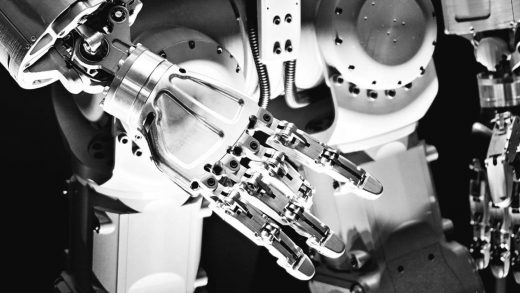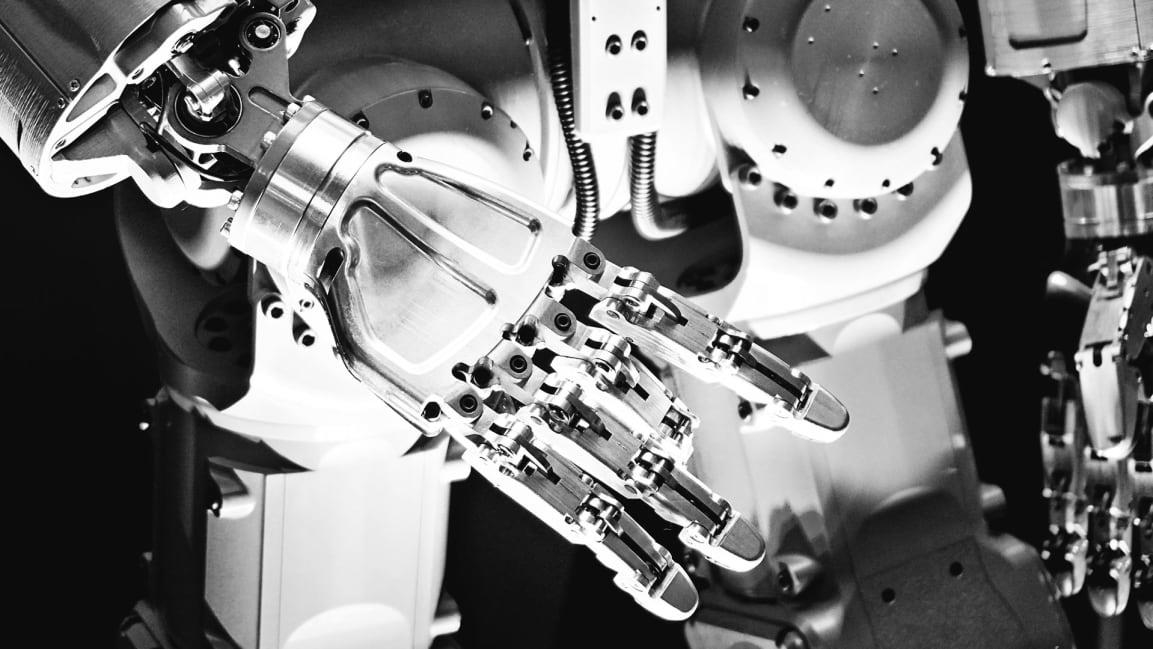Here’s what it feels like to sprout an extra pair of robot arms
By Rob Pegoraro
Like many people, I’ve often wished for another pair of hands to juggle complex tasks. I’ve assumed I’d be in charge of them. But that was not the case when I strapped on a robotic assembly called Fusion at the CEATEC tech trade show—Japan’s equivalent of our CES.
Instead, this wearable gadget had a second person controlling my bonus robotic arms through an Oculus Rift S virtual-reality headset. That turned out to tricky for both of us.
The Fusion operator has to move the Oculus controllers in the right direction and manipulate them correctly—a joystick to direct each robotic thumb, then buttons to open or close each robotic index finger or the combined last three digits on each non-human hand. (That last limitation meant that I could not flip off anybody with the Fusion’s middle fingers.)
Working these controls was frustratingly non-obvious, as I struggled to get one electronic extremity to grasp a paper cup and use the other to drop a plastic ball in the cup. It was as if I’d just evolved opposable thumbs.
Merely seeing these hands in the Oculus headset was tricky, because they kept swimming out of reach at the bottom of the view provided by that VR device’s head-worn display.
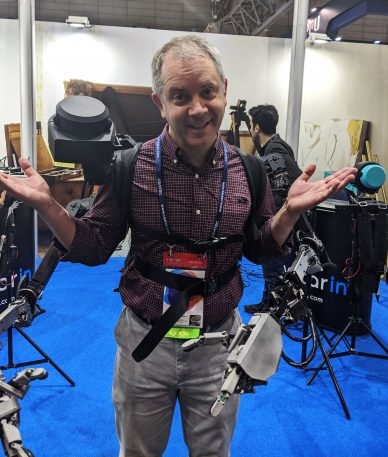
Donning the Fusion equipment provided a different challenge. You wear 26 pounds of gadgetry like a backpack that happens to be stuffed with servos and software, with straps to hoist over each shoulder and two straps to fasten across your chest.
It felt weirdly alive, with actuators rumbling across my back to drive the arms and hands. A separate assembly with paired cameras and microphones perched over my shoulder like a cybernetic second head.
Then I watched the hands that weren’t mine attempt to repeat the same task of picking up the paper cup, picking up the ball, and dropping the latter into the former
Looking at these metal-and-plastic appendages hovering in front, I realized that my operator could punch me in the face. But he was no more successful than I at wielding them, and instead fumbled the cup, the ball, or both.
So while my first look at this getup made me think I’d become Ripley from Aliens wearing her exosuit, the reality was much more frail. Even when operated by people who knew what they were doing and could reliably transfer that ball into that cup, Fusion’s hands shook visibly in an idle state, a consequence of the vibrations of its motors resonating through those metal arms.
From training to travel
In its current form, Fusion is ungainly. But the possibilities for the technology, a project of Keio University’s Graduate School of Media Design that was also shown off at the SIGGRAPH conference in Vancouver last year, are intriguing. This “Full Body Surrogacy for Collaborative Communication” system allows for such possibilities as collaborative work and assisted learning. You can imagine a version with finer motor control allowing an expert to train a newcomer by walking through various forms of complex craftsmanship.
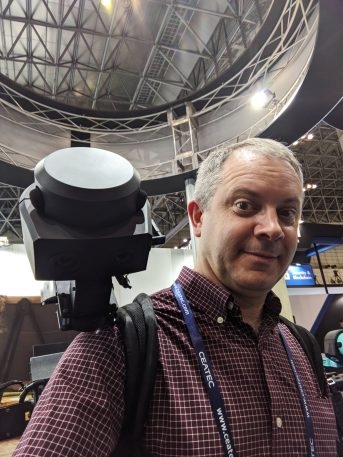
“We are trying to optimize the design of it,” said MHD Yamen Saraiji, project senior assistant professor at Keio, while tightening some screws on one of the demo models at CEATAC. He said the current generation cost about 10 million yen, or roughly $92,000. “It’s really not that high of a number for robotics.”
For all the work Fusion may need, in this trade-show context it works as an attention magnet. It figured in a Tuesday-afternoon keynote from ANA, when Shinya Katanozaka, the airline’s CEO, briefly put one on. It also drew crowds at ANA’s exhibit on the floor of the Makuhari Messe convention center outside Tokyo.
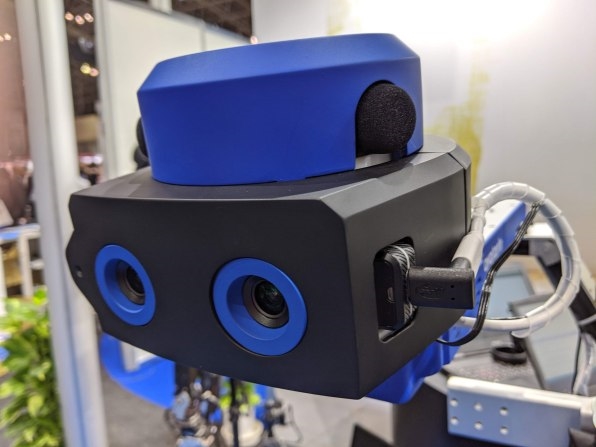
Why would an airline be interested in robotic arms? ANA envisions providing avatars as a service that could take the place of travel, in the form of “newme” telepresence robots shown off at CEATAC. It’s also sponsoring an X-Prize competition to develop “an Avatar System that will transport a human’s sense, actions, and presence to a remote location in real time, leading to a more connected world.”
As part of that, ANA has supported the development of the last two versions of Fusion, ANA Avatar Division co-director Kevin Kajitani told me by email.
Asking for personal-extension robots to take the place of travel may seem only slightly less ridiculous than trying to build an Iron Man suit. But after weather-induced flight cancellations and subsequent re-routing stretched my journey to Tokyo into a two-day, three-country, four-flight trek, I’m a little less prepared to rule out that concept.
(Disclosure: CEATEC’s organizers covered my travel costs, along with those of a handful of other U.S.-based tech journalists.)
(13)

